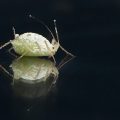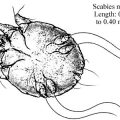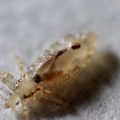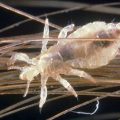Lice are small parasites that live on the skin. Usually, they are connected to the hair on the scalp or in pubic area. Infection caused by lice is called pediculosis. Scabies on the other hand, is an extremely itchy skin condition caused by infestation of parasites called scabbie mites, which lives and burrows on skin. Both scabies and lice cause itching, and they’re contagious and can be spread through close skin-to-skin contact.
Differentiating Lice and Scabies; How to Know if You Have One or the Other
If you’re itching on scalp or other hairy areas of your body, then it’s more likely to be lice, especially if the itching lasts all day. Scabies on the other hand, usually appears on the neck or head area, and itching gets worse at night.
To check for lice, you need to get your scalp checked closely. Lice can be very difficult to find, and the best way to find them is to look for their eggs (called nits), which are light brown in color. They attach to the shaft of the hair, very close to the scalp, and they usually nest near the neck or behind the ears.
Scabies are even harder to find, as these mites dig deep into the skin. They can infest the skin between your fingers or around your wrist or ankles, causing the skin look wavy red, with raised lines.
How to Treat Lice
Treatment for lice is done only when there are live lice. They are usually killed with over-the-counter special shampoos or lotions. Nix and Rid are the two most popular brands for treating lice; the former is used by damping the hair first, while Rid must be used on a dry scalp. Both must be left for 10 minutes before rinsing thoroughly.
To remove lice eggs, use special fine-toothed comb and comb your hair thoroughly. Empty egg sacs can be found on your hair after a couple of weeks of treatment. But this doesn’t mean you need to get more treatment.
Treatments must be only used once a week, and it is important that you make sure there are lice eggs before repeating the treatment. Note that itching doesn’t automatically mean you have lice.
Lice can live in pillows, bed sheets, and clothing. Thus, make sure you get rid of them by washing them with hot water. You can also place your clothes in a sealed plastic bag for a couple of weeks and wait for lice and eggs to die. Also, make sure you vacuum your house thoroughly.
How to Treat Scabies
As said earlier, scabies are harder to find than lice, which means they can be quite harder to get rid of. If you suspect you have scabies infection, then you need to see your doctor right away. Your doctor will prescribe you with a special cream you can use topically, especially around your neck. Creams are usually left overnight, around 8 to 14 hours, before you can wash it off thoroughly. Follow the label’s instructions. Your close contacts must be treated as well (family, especially your sex partner).
Like lice, scabies can infest clothing, sheets, towels, etc., thus, they must be washed in a hot water and dried thoroughly using a dryer, at a high temperature setting. Those that can’t be washed must be cleaned thoroughly, if possible, must be sealed on plastic bag for 3 days. Never use powders or pesticide sprays, as they’re simply ineffective against scabies.






 I love to write medical education books. My books are written for everyone in an easy to read and understandable style.
I love to write medical education books. My books are written for everyone in an easy to read and understandable style.